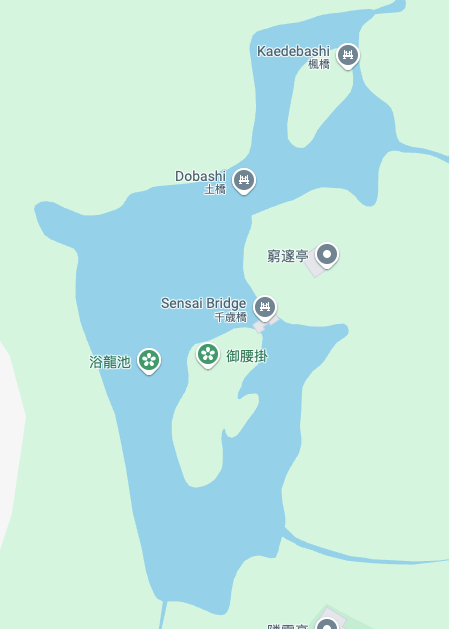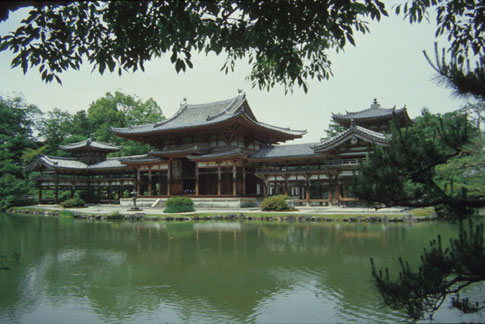
Shugaku-in was built by Emperor Gomizuno-o in 1629 as a retirement retreat. Of its three gardens, that of the most elevated area is best preserved. It consists of a large pond garden that makes maximum use of borrowed scenery, or shakkei, since it is located on the slope of a hillside at the foot of Mt. Hiei. Choose a view point from the map or click Tour the Garden for more views.
In 1629, Emperor Gomizuno-o (1596-1680) retired in favor of his daughter. Seeking a site for a retirement retreat, he eventually settled upon a hillside to the northeast of Kyoto and began construction in 1655. The site was originally that of a Heian Period temple known as Shugaku-ji, hence the current name. Located at the foot of Mt. Hiei, the villa commands a spectacular view of the surrounding hills and the valley below, a landscape which not only serves as a backdrop to the gardens of this imperial estate, but essentially extends it visually. This concept--shakkei or "borrowed scenery"--is common to a number of Japanese gardens, but is perhaps best understood at Shugaku-in. The estate measures over 70 acres, and would eventually consist of three levels, each with its own villa and garden. Although there still exist remnants of the gardens of the lower and middle villas (Shimo no chaya and Naka no chaya), it is the garden of the upper villa--Kami no chaya--that is best preserved and most dramatic in its expansive nature (the villa and garden had been neglected in the eighteenth century, but were restored in the 1820's). It surrounds a large pond (Yokuryuchi, or Pond of the Bathing Dragon) created by an earth dam and fed by streams from the upper slopes of the mountainside. A footpath circles the pond and gives access to three islands connected to the mainland by bridges of various design. The largest of the islands features an eighteen-mat pavilion (Kyusui-tei, or Far-away Pavilion) from which the emperor could contemplate his creation. One's first view of the garden, however, is usually from the Rinun-tei, or Cloud Touching Pavilion, from which one commands an elevated view of much of the lake as well as the mountains beyond.

